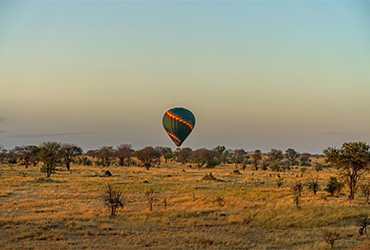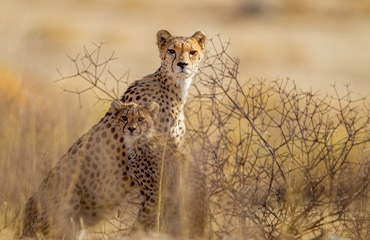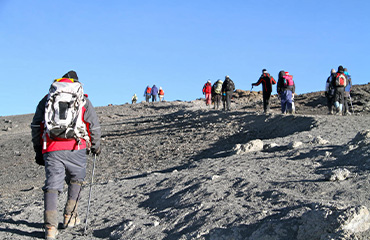Explore the Nature of Lake Manyara National Park with Mielleur Tours
Lake Manyara, located in northern Tanzania within Lake Manyara National Park, is a shallow alkaline lake covering about 231 square kilometers. Situated at the base of the Great Rift Valley escarpment, its size varies with the seasons, attracting numerous bird species, notably flamingos.
The park surrounding the lake boasts diverse ecosystems like groundwater forests, grassy plains, and acacia woodlands, making it a vital habitat for wildlife such as elephants, giraffes, zebras, hippos, and various antelope species. Besides its rich biodiversity, Lake Manyara offers stunning scenic beauty, including views of the rift valley escarpment, making it a favorite destination for safari and nature enthusiasts.
Key Features of Lake Manyara National Park
- Diverse ecosystems: Lake Manyara National Park boasts diverse habitats such as groundwater forests, grassy plains, wetlands, and alkaline shores, supporting a rich array of plant and animal species.
- Scenic landscapes: Enjoy breathtaking vistas with the Great Rift Valley escarpment as a backdrop, offering panoramic views of valleys, forests, grasslands, and Lake Manyara's shimmering waters.
- Tree-climbing lions: Witness the unique behavior of tree-climbing lions, a rare sight that showcases Lake Manyara's distinctive wildlife experiences.
- Rich birdlife: Explore a birdwatcher's paradise with flamingos, pelicans, storks, eagles, and a myriad of other bird species thriving in the park.
- Great Rift Valley backdrop: Marvel at the park's location within the Great Rift Valley, offering unparalleled geological marvels and educational insights into tectonic processes.
- Cultural interactions with Maasai: Engage in cultural exchanges with Maasai communities, gaining firsthand knowledge of their traditions, lifestyle, and conservation efforts.
- Birdwatching paradise: Spot a rich variety of bird species, including flamingos, pelicans, storks, and eagles, making it a haven for birdwatchers.
- Large mammal sightings: Encounter a wide array of wildlife, including elephants, giraffes, buffaloes, zebras, wildebeests, hippos, and more.
- Hippo pool: Visit the hippo pool to observe these massive creatures as they wallow and play in the water.
- Maji Moto: Discover the Maji Moto hot springs, a natural oasis where visitors can soak in the warm mineral-rich waters amidst stunning surroundings.
- Cultural encounters: Engage with the local Maasai communities and learn about their traditional way of life, culture, and customs.
Wildlife Diversity at Lake Manyara
Lake Manyara National Park is home to a diverse range of wildlife, including elephants, giraffes, zebras, buffaloes, impalas, and the famous tree-climbing lions. Visitors can witness these magnificent creatures in their natural habitats and observe unique behaviors like lion sightings in trees.
Attractions in Lake Manyara
- Lake Manyara: The park's namesake lake is a scenic highlight, with its shimmering waters attracting diverse birdlife, including pink flamingos, pelicans, and numerous waterfowl. Visitors can enjoy boat safaris or birdwatching along the lake's shores.
- Great Rift Valley: As part of the East African Rift System, Lake Manyara National Park provides stunning views of the Great Rift Valley, a geological wonder known for its tectonic activity and diverse landscapes.
- Groundwater forests: These lush forests are fed by underground springs and are home to a variety of flora and fauna, including monkeys, baboons, birds, and unique plant species. Guided walks through the forests offer opportunities for nature enthusiasts to explore this biodiverse habitat.
- Alkaline shores: The alkaline shores of Lake Manyara create unique habitats for wildlife adapted to these conditions, such as flamingos and other waterbirds. Visitors can observe these species up close from designated viewpoints or observation decks.
- Scenic viewpoints: The park features several scenic viewpoints and lookout points offering panoramic views of the surrounding landscapes, including the lake, forests, and the Great Rift Valley. These viewpoints are ideal for photography and enjoying sunset or sunrise vistas.



What To do in Lake Manyara National Park Safari
In Lake Manyara National Park, you can experience a wide range of activities tailored to suit different preferences and interests. Here are some of the exciting activities you can enjoy:
Activities and Tours in Lake Manyara
- Game drives: Safari game drives are a popular activity in Lake Manyara National Park, allowing visitors to explore the park's diverse habitats and wildlife populations. Experienced guides lead drives in safari vehicles, providing insights into the park's ecology and wildlife behavior.
- Birdwatching: With its rich birdlife, Lake Manyara is a paradise for birdwatchers. Binoculars and bird identification guides are essential for spotting and identifying the numerous bird species found in the park.
- Nature walks: Guided nature walks offer a more intimate exploration of the park's ecosystems, including the groundwater forests, wetlands, and open savannah. Knowledgeable guides share information about plant life, animal tracks, and ecological interactions.
- Cultural tours: Cultural tours with Maasai guides provide cultural insights into the traditions, lifestyle, and conservation practices of the Maasai community living near the park. Visitors can visit Maasai villages, interact with locals, and learn about traditional crafts and ceremonies.
- Picnicking: Designated picnic sites within the park offer opportunities for visitors to relax, enjoy meals, and soak in the natural surroundings. Picnicking is a leisurely way to appreciate the park's beauty and wildlife sightings.
How to Visit Lake Manyara National Park: Tips and Recommendations
- Best time to visit: Dry season (June to October) for optimal wildlife sightings
- Access: Easily accessible from Arusha and other major cities in Tanzania
- Tour options: Choose from guided tours, safari packages, and cultural experiences
- Accommodations: Stay at lodges, tented camps, or resorts near the park for a comfortable stay
- Local guides: Opt for experienced guides to enhance your wildlife viewing and cultural interactions




















